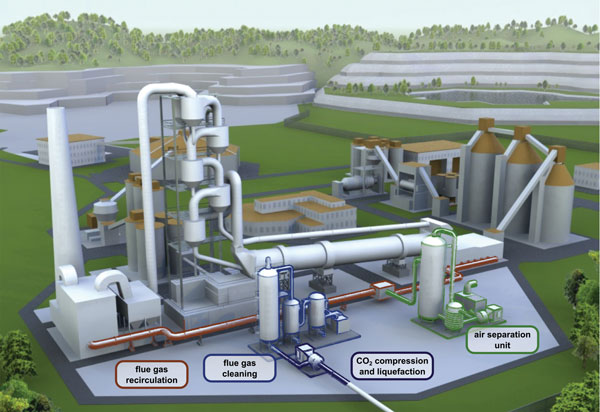Oxyfuel: prospects and limits
Oxyfuel technology shows promise as a potential future method to help lower CO2 emissions through carbon capture and storage in the cement industry. However, the use of oxyfuel leads to a more complex kiln layout and operation, resulting in higher operating costs. By Dr Kristina Fleiger & Dr Volker Hoenig, VDZ, and Prof Dr Albrecht Wolter, TU Clausthal, Germany.

Figure 1: oxyfuel technology offers one method of capturing carbon
Over the last two decades, the cement industry has reduced its GHG emissions per tonne of cement through a combination of different means in an effort to address climate change. Such initiatives have been undertaken in line with goals set out by the International Energy Agency requiring industrial CO2 emissions to be halved from the 2009 level by 2050.1
Current technologies available to the cement industry that help reduce CO2 emission levels centre around reducing energy efficiency, lowering the clinker content and increasing the use of alternative fuels – but these can only partly contribute to this objective. As their potential has already been exhausted to a certain extent, carbon capture technologies are being seen as a way to ‘close the gap’.

